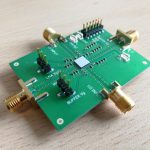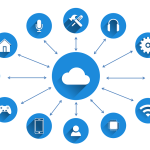
Introduction
The Internet of Things has emerged as a significant milestone in interconnected technology–connecting billions of devices and enabling a seamless data exchange. However, this massive influx of data has posed certain challenges for traditional cloud computing systems, leading to the emergence of edge computing–a game-changing solution. This article uncovers the unprecedented benefits of edge computing in IoT, highlighting its role in enhancing efficiency, reducing latency, ensuring data privacy, and improving overall system reliability.
Understanding Edge Computing in IoT: The Significance
Edge computing is a distributed computing paradigm contributing to data processing closer to the network’s data source or “edge” of the network. In the context of IoT, edge computing involves processing and analysing data on the IoT device itself or a nearby edge server rather than sending it all the way to a centralised cloud data center. Edge computing in IoT is reshaping various industries, including manufacturing–optimising production lines, predictive maintenance, and quality control, enabling more effective and efficient IoT ecosystems. Other sectors where edge computing drives its adoption include healthcare, smart cities, retail, and transportation.
Exploring the Unparalleled Benefits of Edge Computing in IoT
Edge computing in IoT offers several key benefits that make it a compelling approach for processing data generated by IoT devices. Some of the most prominent advantages include:
- Reduced Latency
One of the prominent advantages of edge computing in IoT is its ability to reduce latency significantly. In traditional cloud-based IoT architectures, data is sent to remote data centers for processing–introducing delays in critical applications. On the other hand, edge computing processes data closer to the source—right at the network’s edge. This proximity minimises the time it takes for data to travel back and forth and ensures the safety and reliability of IoT applications that require real-time responses.
Consider a self-driving car that relies on IoT sensors to make split-second decisions. With edge computing, the data from these sensors is processed locally within the vehicle, allowing immediate actions without relying on a distant cloud server.
- Enhanced Efficiency
In scenarios where IoT devices generate large data volumes, sending all this data to the cloud for processing can quickly strain network infrastructure and increase operational costs. Edge computing optimises using network resources and bandwidth by offloading some of the computational tasks from centralised cloud servers, resulting in improved efficiency and cost savings.
Furthermore, IoT devices can filter and send only relevant information to the cloud, reducing unnecessary data transfer. This approach conserves bandwidth and ensures valuable network resources are used more efficiently, making IoT deployments more cost-effective.
- Data Privacy and Security
Data privacy and security are among the paramount concerns in the IoT landscape. Transmitting sensitive data over the internet to remote data centers poses risks such as data breaches and unauthorised access. Edge computing addresses these concerns by keeping sensitive data closer to the source and reducing exposure to potential threats.
With edge computing, IoT devices can perform initial data processing and encryption locally, safeguarding sensitive information before leaving the device. This approach offers additional protection against cyberattacks and unauthorised access, making it an attractive option for industrial facilities where data privacy is critical, such as healthcare and finance.
- Improved Reliability
Edge computing enhances the reliability of IoT systems by reducing dependency on a centralised cloud infrastructure. In traditional cloud-based setups, a network outage or server failure can disrupt the entire system, leading to downtime and potential losses. Edge computing, however, allows IoT devices to continue functioning even if they lose connectivity to the cloud.
For instance, in an agricultural IoT application relying on edge computing, sensors and actuators can monitor and control equipment in the field, even if there is a temporary internet disconnection. Once the connection is restored, data can be synchronised with the cloud, ensuring uninterrupted operation and preventing costly downtime in critical applications.
- Scalability and Flexibility
Edge computing offers scalability and flexibility well-suited to the dynamic nature of IoT deployments. With increased IoT devices and data volumes, organisations can easily expand their edge computing capabilities to accommodate increased processing demands. This scalability facilitates businesses to adapt to changing requirements without major infrastructure overhauls.
Furthermore, edge computing allows customisations to meet specific application needs. Organisations can deploy edge nodes with varying processing power and storage capacity levels, tailoring the infrastructure to match the requirements of individual IoT devices and applications. This flexibility ensures IoT systems can efficiently handle diverse workloads and adapt to evolving business needs.
- Offline Operation
Edge devices can function even without internet connectivity, making them essential for IoT applications in remote areas or environments with unreliable network connections.
Bottom Lines
Edge computing is a technological evolution–a fundamental enabler of the IoT-driven future, revolutionising the IoT landscape in multiple industrial facilities. Edge computing offers robust capabilities to address key latency, efficiency, data privacy, security, reliability, and scalability challenges. As IoT continues to proliferate across industries, the benefits of edge computing will become even more pronounced. By processing data closer to the source, enterprises can harness the IoT’s full potential, enabling faster decision-making, improved resource utilisation, and enhanced security.





















